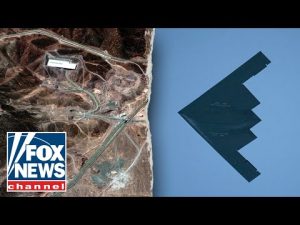In the sphere of international geopolitics, the stakes can rise quicker than one might expect, and this seems to be the case with the recent developments involving U.S. naval assets in the Arabian Sea. A second aircraft carrier group, the USS Nimitz, is making its way into the region, adding significant firepower to the already potent mix. With this move, the number of Navy fighter aircraft at the disposal of the U.S. effectively doubles, a fact that’s sure to make any adversary take notice and, perhaps, rethink any plans of mischief.
The presence of American naval power is further anchored by the deployment of missile defense systems in the Eastern Mediterranean. These measures appear to be in place as a safeguarding strategy against potential missile threats, specifically those targeting our ally, Israel, from regions like Iran or Yemen’s Houthis. It’s a solid demonstration of U.S. resolve and capability, reminding one and all that instability in the region won’t go unchecked, at least not while there are U.S. carriers prowling the waters.
As if that wasn’t enough to keep everyone on their toes, the conversation around Israel’s military actions against Iranian nuclear facilities, such as the one at Fordow, adds another layer of complexity. These operations serve the dual purpose of showcasing military might while addressing international nuclear proliferation concerns. The Fordow facility, buried beneath a mountain and housing an extensive network of centrifuges, poses a significant challenge. Despite the formidable defenses, the consensus appears that with the right military hardware, namely the B-2 stealth bombers, even Fordow’s fortress-like walls aren’t impregnable.
There’s a bit of tongue-in-cheek humor to be found in the idea that Israeli commandos could perform a surgical operation on such a well-fortified target. Of course, that approach carries risks, like mission failure or difficulty extracting personnel. The preferred methods seem to be airstrikes that can target vital infrastructures, like power facilities or tunnel entrances, followed by the Pentagon’s pièce de résistance – the GBU-57 bunker buster. This weapon, especially when paired with the delivery capabilities of a B-2 bomber, has been designed to quite literally rock the underground world of nuclear zealots.
And let’s not forget about the remarkable technological powerhouses that are the B-2 stealth bombers. With specifications reading like something out of a science fiction novel—59 feet long with a wingspan of 172 feet—these aircraft are a testament to American ingenuity and a less-than-subtle reminder of who dominates the skies. It’s all part of ensuring that when America talks defense, the message is loud and clear, delivered on the wings of aviation miracles and a willingness to act when needed. America might just be the world’s most persistent peace advocate, albeit with a steely gaze and a toolkit that includes options like flattening hostile facilities.







